Welcome to the latest installment of Show Us Your Space, our series in which we invite studio owners, builders, and musicians at all levels to show off their music-making environments—from attic workspaces to world-class recording rooms. Previously, we visited the Acouphonic vintage tube equipment repair shop in Vouvray, France, and Power Station New England’s wood-panelled, dome-topped studio in Coastal Connecticut.
Today, we’re heading to Los Angeles, where electronic dance producer Eddie Ruscha V’s small room overflows with classic synthesizers and drum machines. Under his Secret Circuit moniker, Ruscha has released albums like 2013's acclaimed Tactile Galactics and a string of 12" singles and compilations.
His music mixes elements of trance, psychedelia, and house music, based off of the melodies and textures he can coax from his enviable synth collection. On March 2, he’ll release Who Are You as E Ruscha V. Keep reading as he takes us on a virtual tour of his synth haven. To learn more about Who Are You or pre-order the album, you can click here.

Welcome to my studio. Yeah, it’s a bit chaotic, but I don’t always see it that way. I have always had cramped studio setups, so this one seems luxurious to me, even if I sometimes trip over the cables and synths come crashing down to the floor (just kidding, kind of). A lot of this stuff I’ve collected over many years, and I bought many of these things when they were still reasonably priced.
I search garage sales and thrift stores quite a bit and I never discount a crappy, undesirable item, as it may have something amazing to offer. Mainly I look for an instrument to speak to me and involve me—to bring me into its world. If I can capture it through recording then I’ve gotten somewhere. Some of these instruments I use quite often, but all are important to the whole picture.
I really love a lot of the new synths and machines that are coming out, and they seriously seem on the same level as a lot of the classics. They may not have the veneer of time and history but one day they will. As of now, not all of my setup is synced, but a good portion of it is. I can just patch in whatever I want to use.
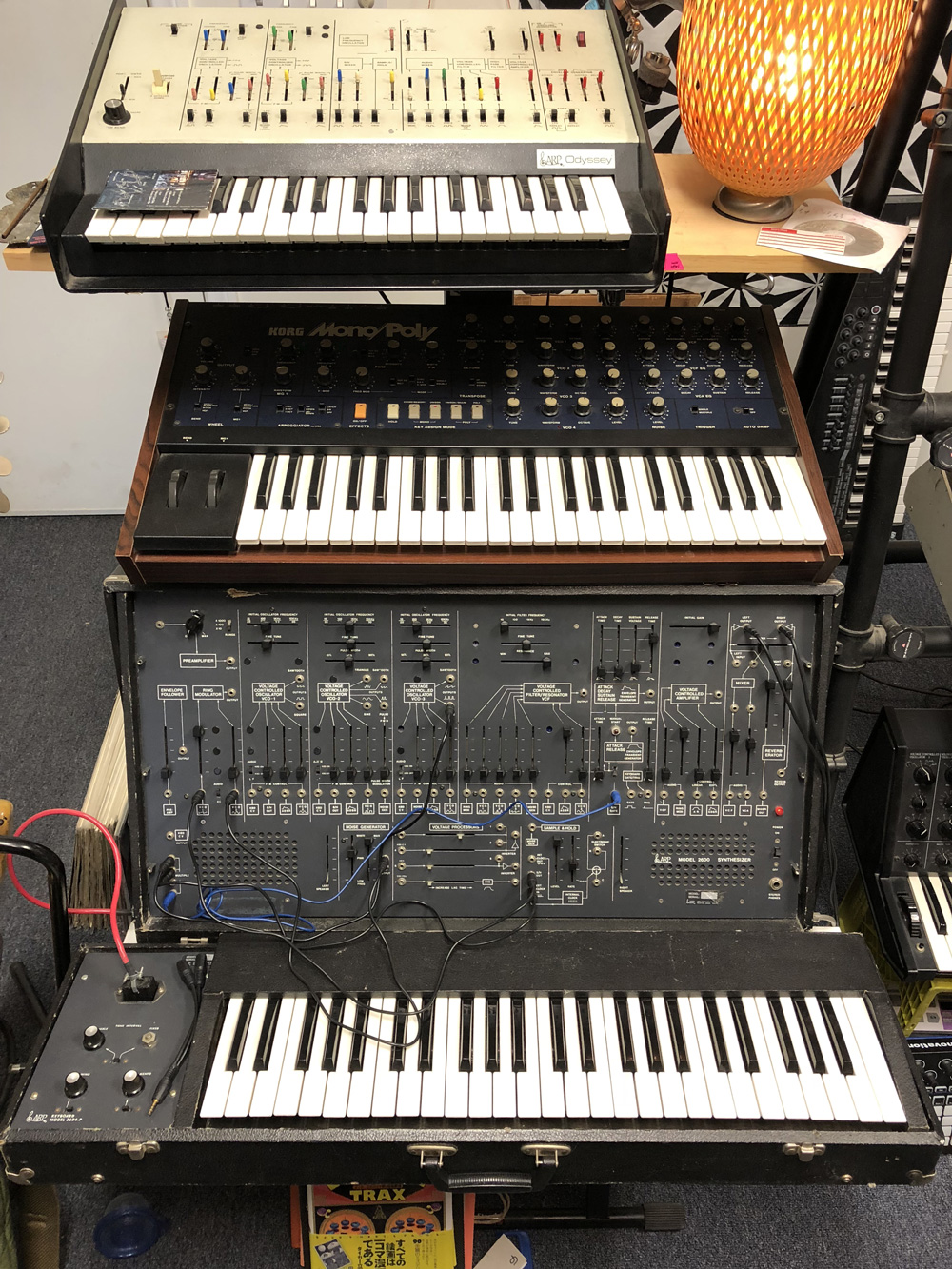
In this picture, you can see an ARP Odyssey from 1972 I bought from an antique store in Venice, California, many years ago for very cheap, as well as a Korg Mono/Poly and an ARP 2600. I use the 2600 quite a bit for warm and natural-sounding electronic melodies and tones. Sometimes a haunting sound can be found, almost like a voice inside that is either singing or crying and laughing, sometimes all at once. It’s a favorite.
With a Beatstep Pro, I can finally sync my LinnDrum to everything else. It was always hard to commit to adding MIDI to it, because I like its original presentation. The Modor NF-1 is a great and creative newer digital synth made in Belgium that is really inspiring, always sending you down an incredible path with almost hallucinogenic overtones of people chanting or possibly alien choirs.
The Oberheim Xpander is a super lush and deep poly synth. The Roland Jupiter-6 can get some insane textures and rippling melodies, and I use this quite often. The Korg MS-20 excels at snarling lines with seeping snail trails and grit fits. If I want a synth to sound untamed, this is my go-to. The MKS-80 Super Jupiter is simply huge-sounding.
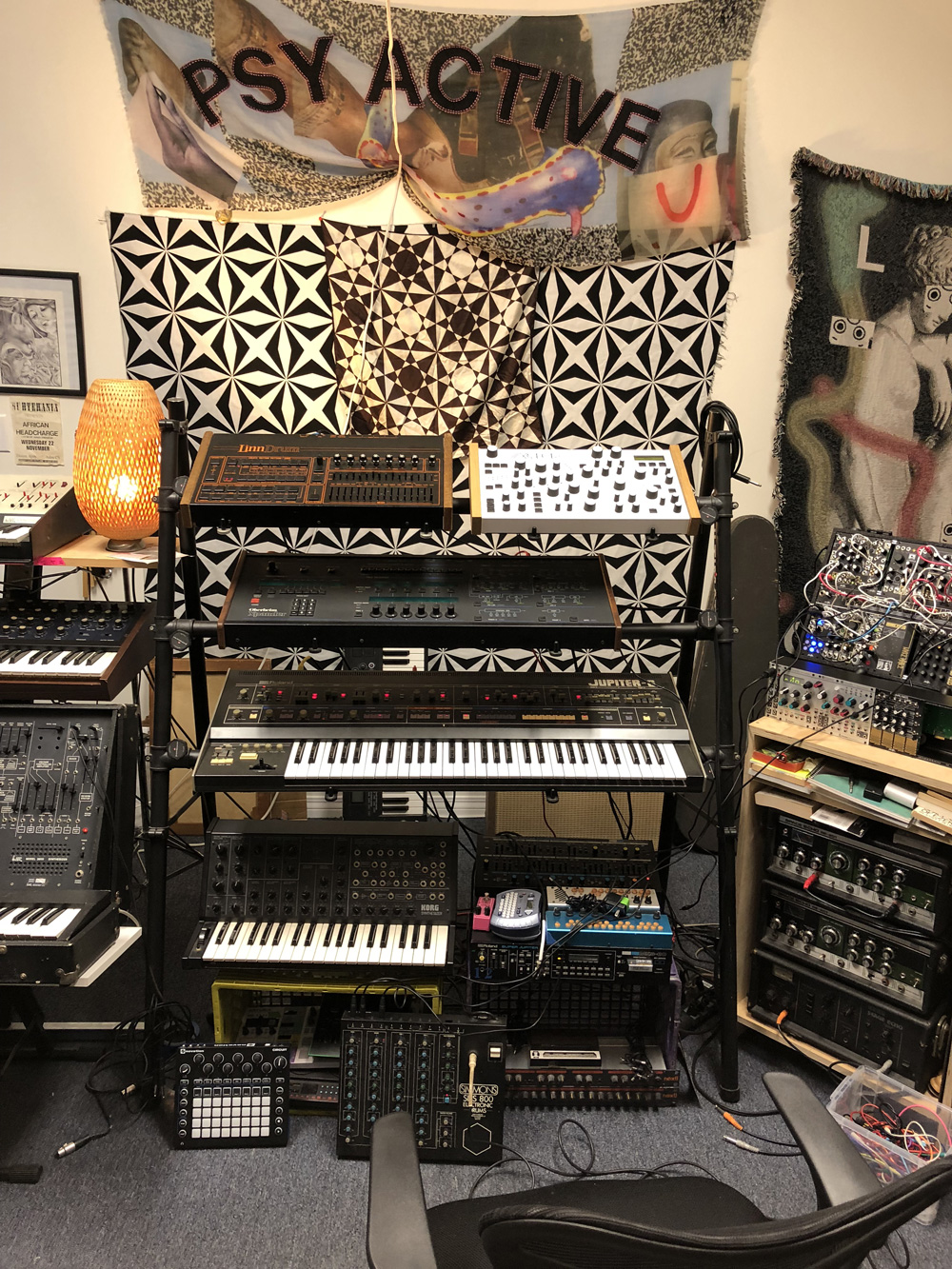
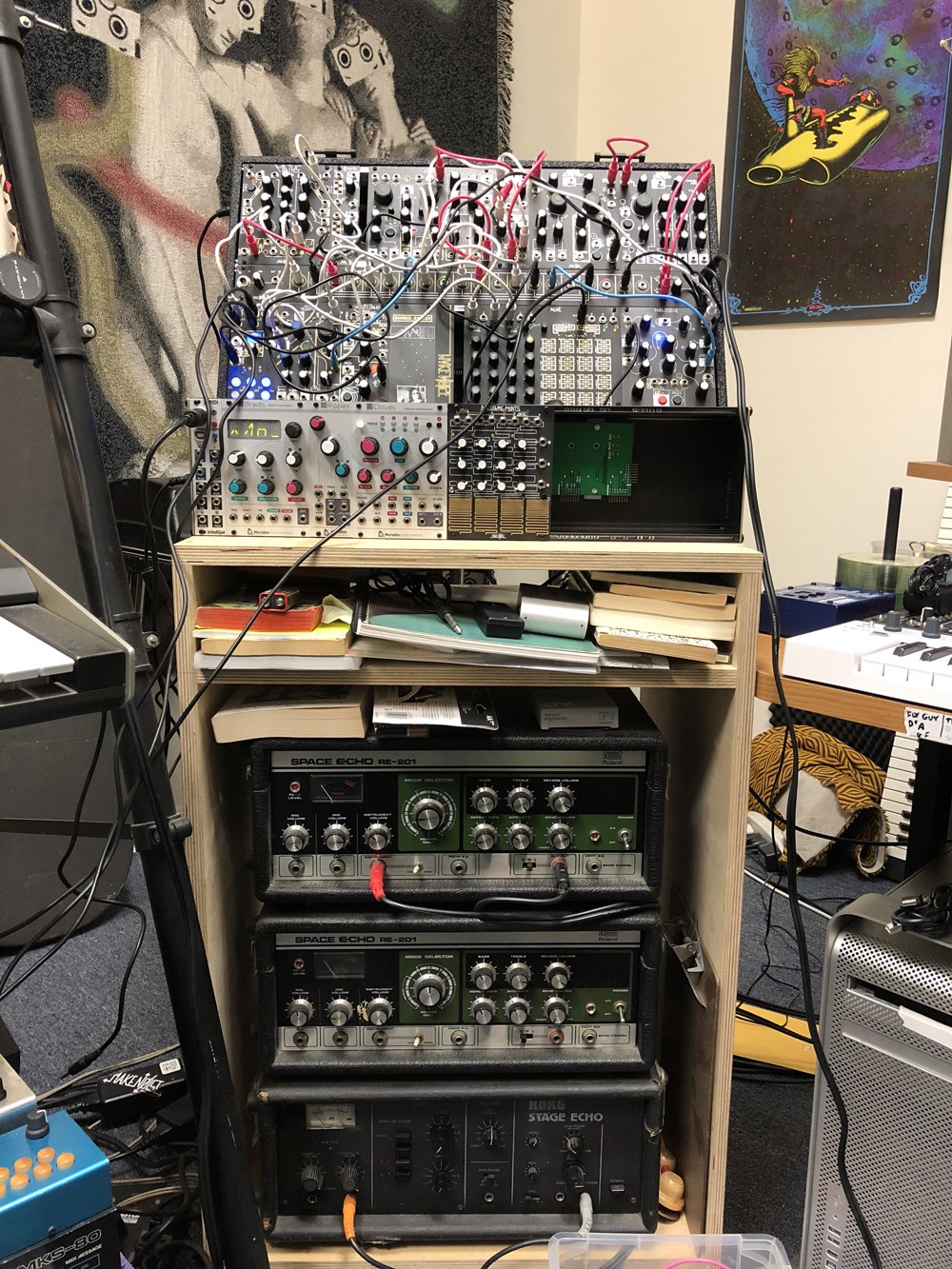
This is a Make Noise shared system and some other modules by Mutable Instruments. I’ve been delving into the modular realm lately and it’s easy to get lost in the worlds that live within. It’s a great addition to the studio, as I use the effects quite a bit on many other instruments.
The Roland Space Echoes can be used together for stereo field dub quadrants. I’ve had one forever, and, recently, a friend was selling his for insanely cheap and I couldn’t resist. On the frequently used list for sure. The Korg Stage Echo has one of the longer tape delays, if I’m not mistaken.
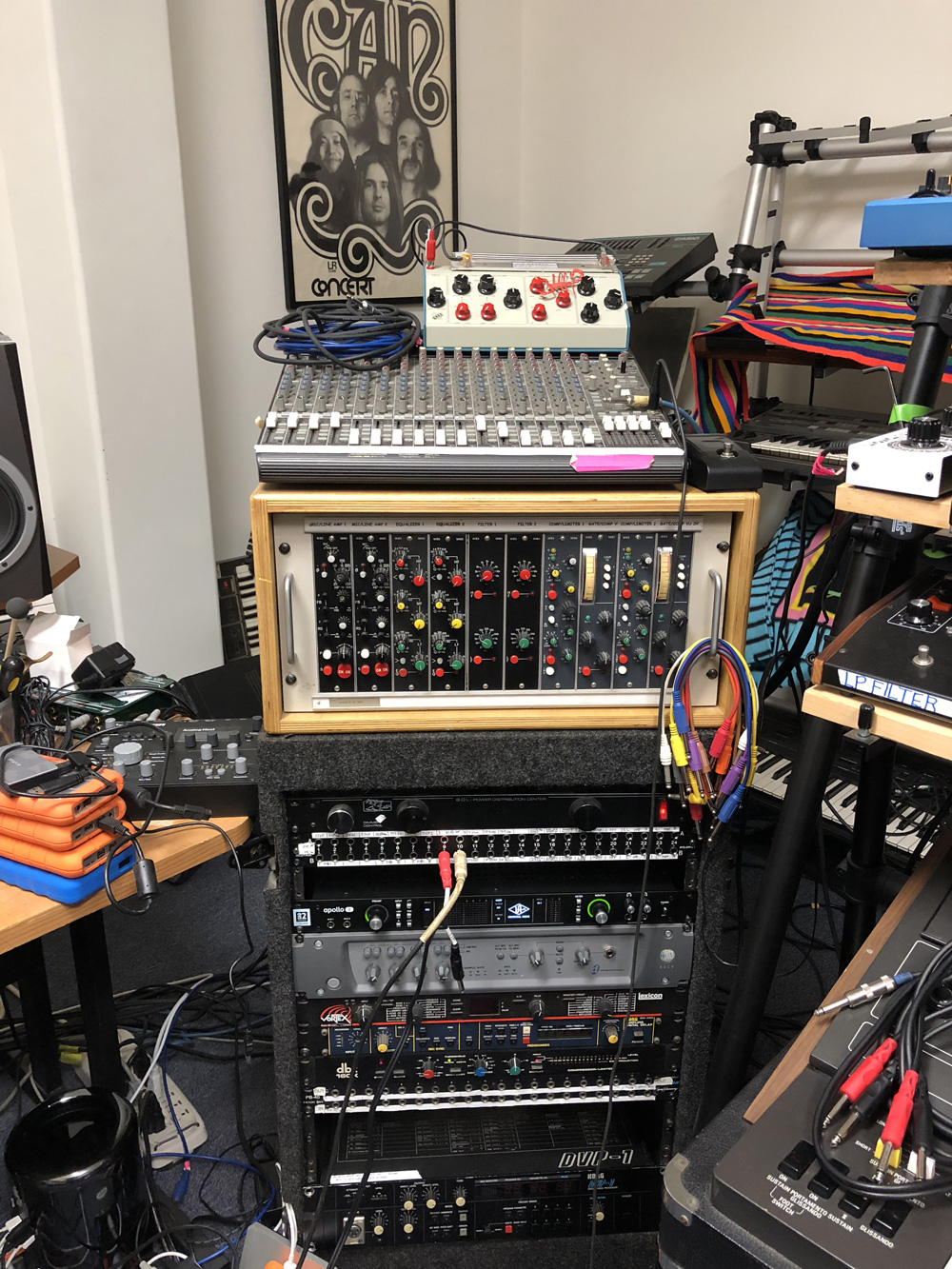
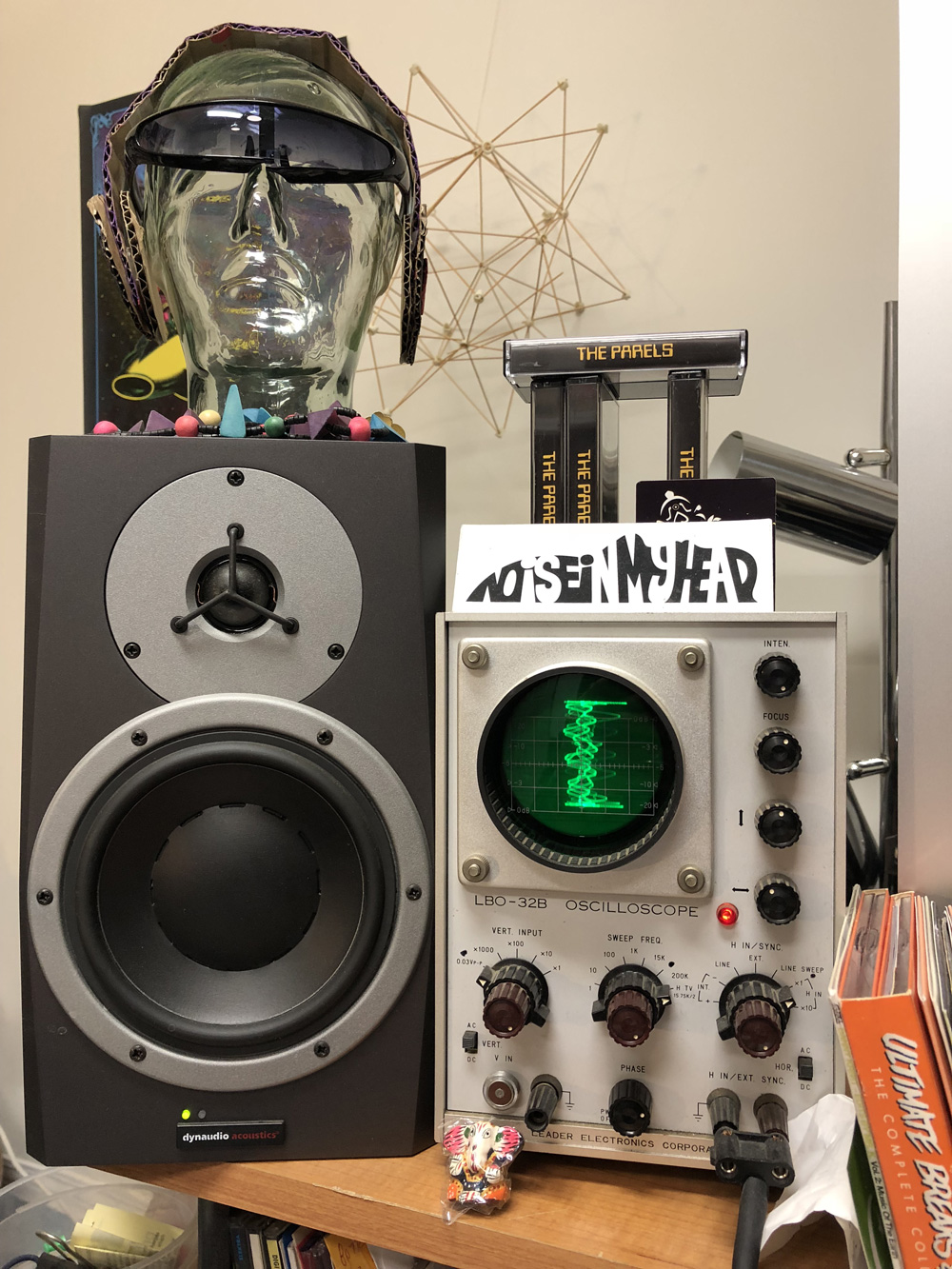
I always have Can looking down on the proceedings and Damo seems to approve, so there’s that. I use the KNAS Ekdahl Moisturizer a lot for the spring reverb and filtering mayhem. Under that is a 1970s Canadian Ward Beck channel strip that gives some serious drive. Some other rack stuff bellow like the DVP-1 that has some weird moments of glory.
If I want to get technical, I can stare at the oscilloscope for hours while a synth arpeggiator goes. I think a lot of the sounds I’m getting would be very wiggly if you were to be next to them in real life.
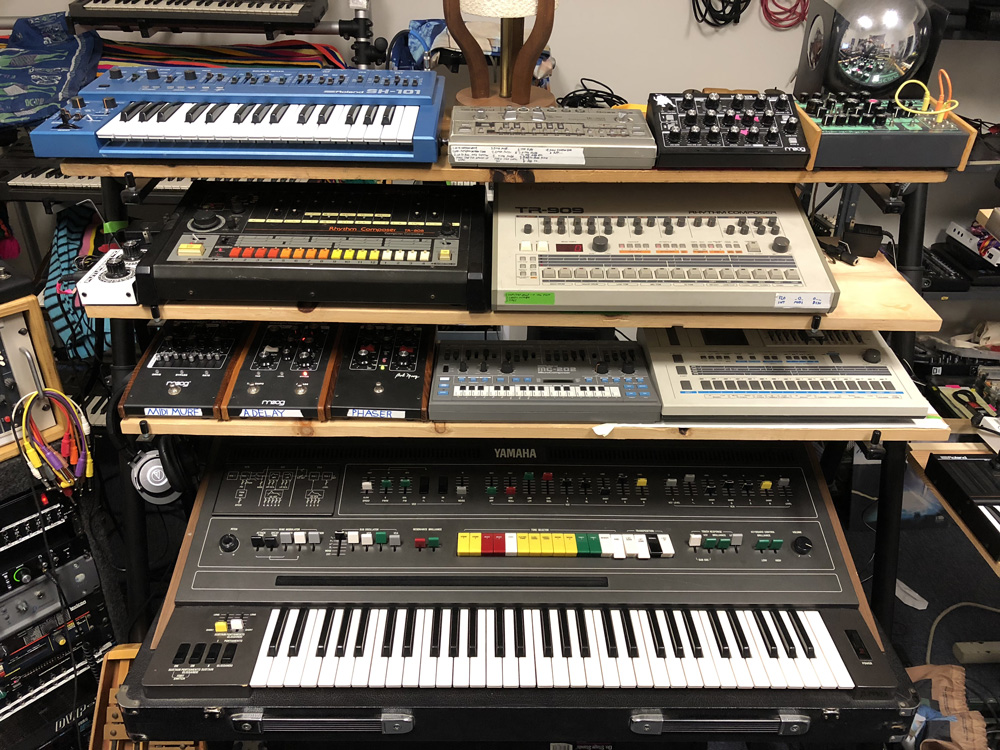
This rack gets lots of attention. The SH-101 was one of the first synths I ever used. The TB-303, of course. The Minitaur—huge bass. The Erebus by Dreadbox is a Greek synth, and I love it. It sounds so fleshed out. I use it live quite a bit. The 808 I bought back in 1991 for $400 and I really thought I was being ripped off. I probably was if it weren’t for the fact that I fell in love with it and use it constantly to this day. The 909, well, y’all know.
The Yamaha CS-60 I use constantly. So many great things come out of it. It doesn’t accept any outside sequencing, so it’s meant to be played for real. A friend loaned me a CS-80 for a good stretch and when he had to take it back it was as if a huge part of the studio was removed. I had to seek out its more accessible baby brother.
This is a rack of synths that I’ll go pick from when I need some extra charm or to stir up the cauldron with some extra spice. The Casio CZ-101 and CZ-5000 are terrific digital synths that have a crystal shimmer and charm I absolutely love. The Juno-60 is a perfect synth. The Opus 3 is really just an odd synth organ combo.
The Korg DW-8000 is really cool, I think, but it may be broken or something. I think it shorts out and resets itself while you are playing it, so it can be annoying that way, especially when you’ve dialed in a crazy patch. I should fix it someday.
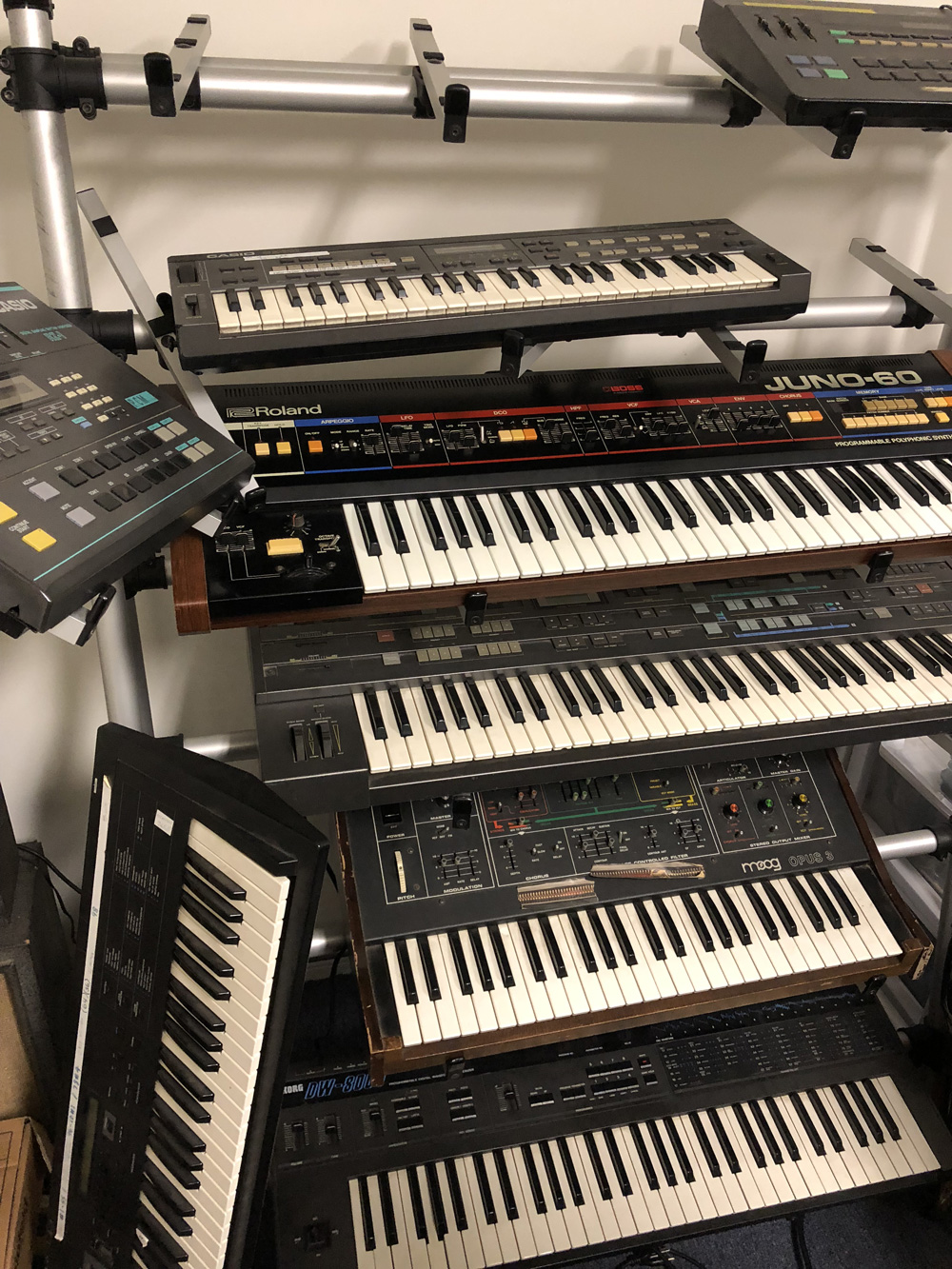
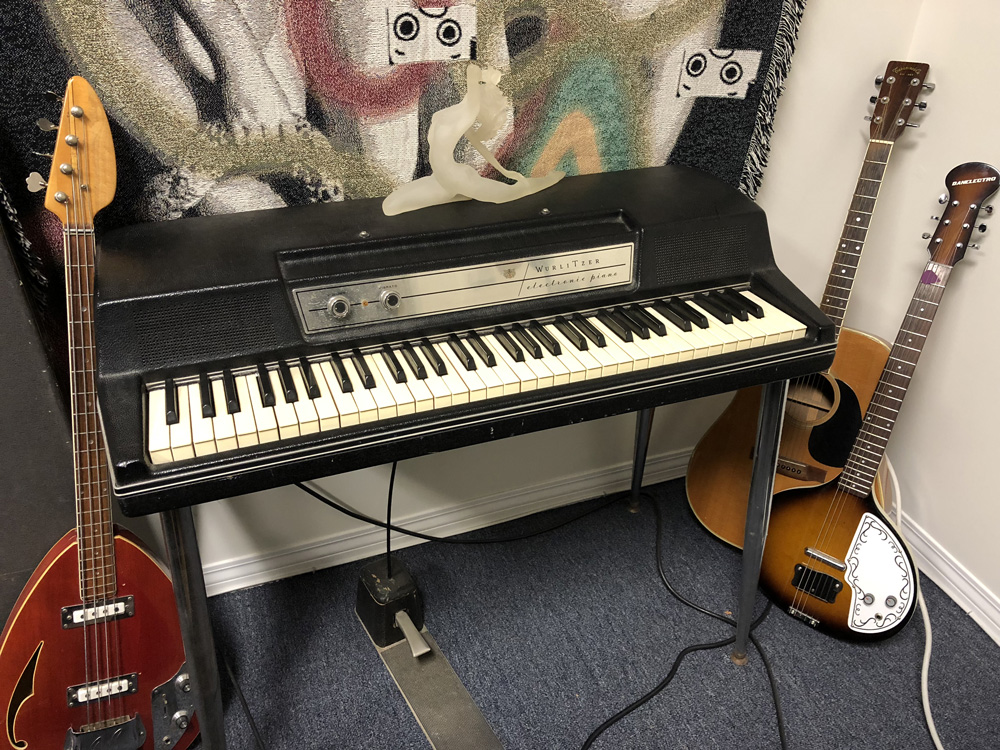
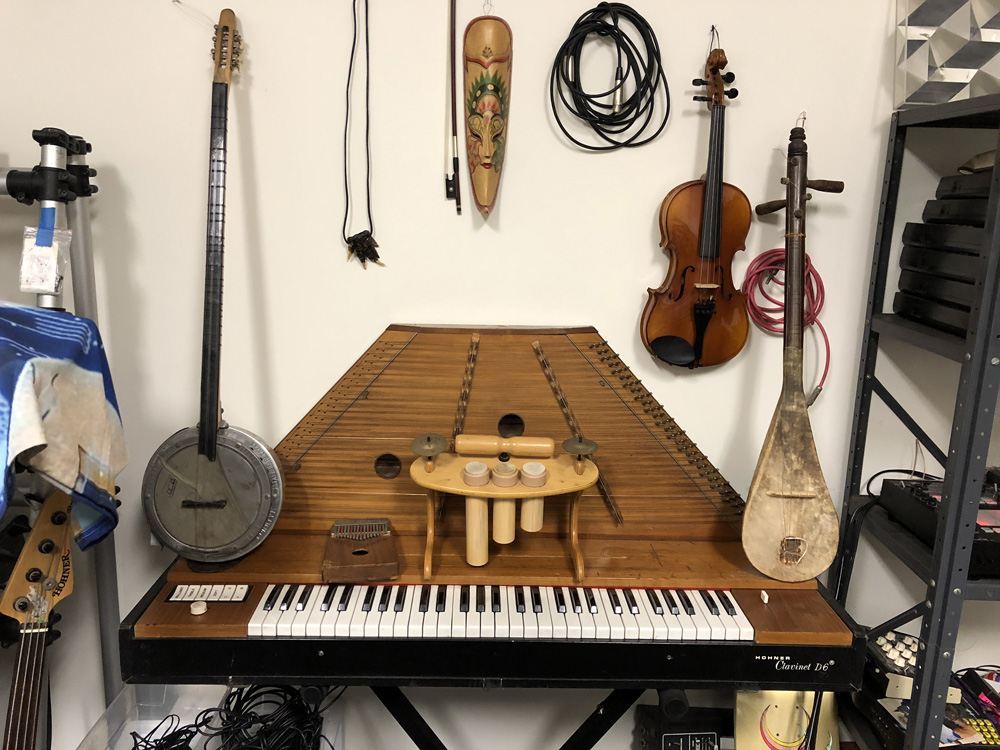
On the left is a Wurlitzer electric piano. No way to replace the real thing. If you sit down at it for a bit, a song comes out, without a doubt.
On the right, here’s a wall of oddball stuff all atop a Hohner Clavinet D6 that I bought from K.K. Barrett from the band The Screamers, an amazing, legendary electro punk band from L.A. that were too punk to make a record. Check them out on YouTube if you have the itch.
I got the Cümbüs Saz in a small town called Mardin in Turkey, on the Syrian border. The war had just started at the time and now Mardin is a war zone and considered off limits. There were tanks driving around the perimeter. It felt really sketchy being a Westerner there but the people were beautiful and kind. The other stuff I just picked up here and there.
Have you assembled an awesome music space that you want to show off? Contact us at [email protected]
